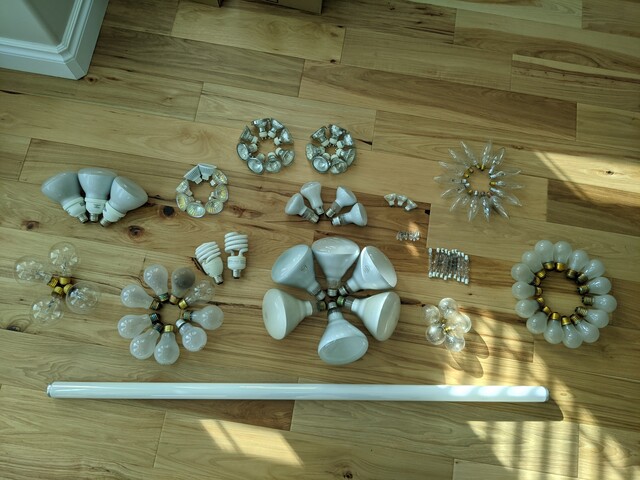107 Lightbulbs
I bought a house last summer, and after moving in on October 1st, one of my first priorities was to replace all of the old (mostly incandescent) light bulbs with efficient LED bulbs. This turned into a five month saga.Growing up, I thought that light bulbs were generally interchangeable. OK, there were fluorescent tube bulbs; but aside from that, while bulbs came in 40W, 60W, and 100W varieties, they were all the same size and screwed into the same sockets. Well, maybe that was the norm in the late 70s, but the house I bought was built in the late 90s and things definitely changed; there turned out to be no less than 14 different types of bulbs needing replacement:
- 11 "regular" light bulbs: A19 bulbs with E26 bases.
- 15 A15 bulbs with E26 bases.
- 14 C35 bulbs with E12 bases.
- 5 G16.5 bulbs with E12 bases.
- 4 G25 bulbs with E26 bases.
- 4 R25 bulbs with E26 bases.
- 2 R30 bulbs with E26 bases.
- 7 BR50 bulbs with E26 bases.
- 3 MR11 bulbs.
- 8 MR16 bulbs.
- 6 G4 bulbs.
- 17 GU10 bulbs.
- 10 78 mm R7S bulbs.
- and finally, a single 4' T12 fluorescent tube.

In total, replacing these bulbs cost $856.80 — but the power consumption (if I hypothetically had all the lights turned on at once) dropped from 5.8 kW down to 800 W. Based on an average 3 hours/day of usage (the Internet gives me estimates ranging from 1.5 hours/day up to 5 hours/day), the bulbs will pay for themselves in just one year — quite apart from the fact that the LED bulbs should last much longer than the incandescent bulbs they replaced.